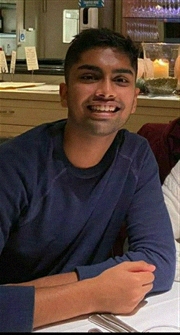Tutor HuntResources Biology Resources
Dna Replication/protein Synthesis - Transcri Ption And Translation
This article explains how Transcri ption and Translation work and ultimately, how proteins are made in the body. Proteins are of vital importance in the body as they make up all Enzymes and Hormones which are essential for growth and survival
Date : 28/04/2021
Author Information

Uploaded by : Kieran
Uploaded on : 28/04/2021
Subject : Biology
What is the point of Transcri ption and Translation? The whole point, and why out body does this many many times a day is to make proteins. Proteins are just a clump of Amino Acids bonded together by Covalent Peptide Bonds. Proteins make up all enzymes such as Amylase which breaks down starch and they also make up most hormones such as Adrenaline or Insulin. So the important of proteins is without question in the human body.
Protein Synthesis occurs in 2 stages, Transcri ption and Translation. Essentially, Transcri ption creates an mRNA strand which is complementary to the DNA strand and Translation is the process of the Amino Acids bonding together.
Transcri ption:
- DNA helix unwinds and the hydrogen bonds between the complementary bases are broken by enzyme RNA Polymerase.
- One strand is used as a template to make the mRNA strand.
- RNA Polymerase lines up free nucleotides (bases found in the cytoplasm) and those nucleotides bond with their complementary base on the template strand. They form hydrogen bonds and bond through complementary base pairing. Phosphodiester bonds are made that join the nucleotides together.
- RNA Polymerase moves along the DNA, separating the strands. Thus assembling the mRNA strand.
- Hydrogen bonds between the mRNA and template strand are broken.
- Hydrogen bonds between the original DNA strands reform (A-T, C-G)
- DNA coils back into a double helix
- When RNA Polymerase reaches a stop codon it detaches from the DNA and stops the production of mRNA.
- mRNA strand moves out of the nucleus through the nuclear pore and attaches itself with a Ribosone.
Translation:
- The mRNA strand attaches itself with a Ribosome which is an Organelle found within most cells that are reponsible for protein synthesis
- tRNA molecules have an anticodon on one end and an Amino Acid on the other.
-tRNA molecules bond with the mRNA chain temporarily as temporary hydrogen bonds are formed between the complementary bases
- A second tRNA molecule bonds temporarily with the mRNA strand and the two Amino Acids on either end of the two tRNA molecules bond together.
- Many tRNA molecules bond and the Amino Acid chain gets larger
- Ribosomal RNA catalyses the formation of the Covalent Peptide bond between the Amino Acids
- This process continues until a tRNA molecule reaches a stop codon which signals this process to stop
- The chain of Amino Acids is called the Primary sequence
- This chain then folds into the Primary Structure of a protein. This protein could be the enzyme Amylase or the hormone insulin which is vital in lowering blood glucose concerntration.
This explanation is at A Level standard. A GCSE explanation is the same thing without the enzymes involved and some of the bonds involved.
This resource was uploaded by: Kieran
